Downward Facing Dog is an inversion posture that allows quieting of the nervous system, which is particularly valuable when coupled with conscious breathing. It offers the benefits of increasing flexibility, core stability, and spinal decompression.
- Start in table top, on your hands and knees (be careful not to slip if you are wearing socks)
- Lift your pelvis up and back
- Keep your knees bent as you find your comfort in the posture
Why choose Downward Facing Dog?
Downward Facing Dog has many benefits. It increases flexibility of the myofascial planes of the:
- plantar fascia
- calves
- hamstrings
- sacrotuberous ligament
The ischial tuberosities, or sitz bones, are a connecting point of the adductors (inner thigh muscles), hamstrings (back of thigh muscles), and sacrotuberous ligament, which continues up to the sacrum. Maintaining optimal flexibility throughout this area is crucial for pelvic, spinal, and hip health, keeping the pulley-like myofascial system symmetrical.
Downward Facing Dog builds strength in the shoulders, which are considered part of the core of the body.
Regular practice of this posture encourages elongation of the spine. It is a wonderful break from sitting at a desk or after traveling on a plane.
This posture is an easily attainable inversion pose for most people, allowing the nervous system to quiet. The student is able to experience a moment of introspection, especially when coupled with conscious breathing.
Make this posture work for you
- Wrist pain? Modify with your forearms on the ground (Dolphin Pose)
- Unable to be on the ground? Place your hands on a wall with your back flat and hip angle at 90 degrees.
Use caution practicing this posture if you have:
- Acute pudendal neuropathic pain, unless this position relieves your pain
- Restrictions in the hamstrings and low back: bend your knees
Avoid practicing the inversion version of the posture if you have:
- Uncontrolled high blood pressure or low blood pressure
- Shoulder/wrist injury
Extra Credit
As you breathe in this posture, use visualization to increase pelvic floor muscle awareness. Imagine your tailbone reaching toward the ceiling as you inhale, allowing the pelvic floor muscles to expand.

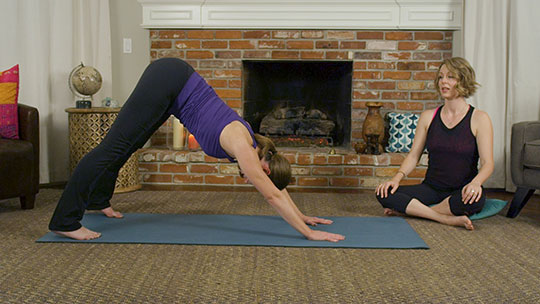
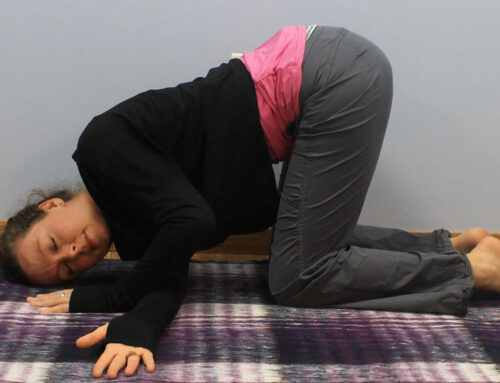
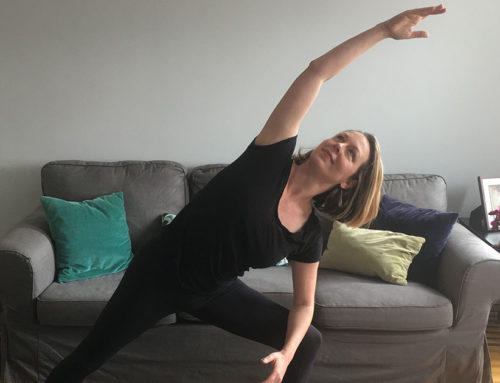

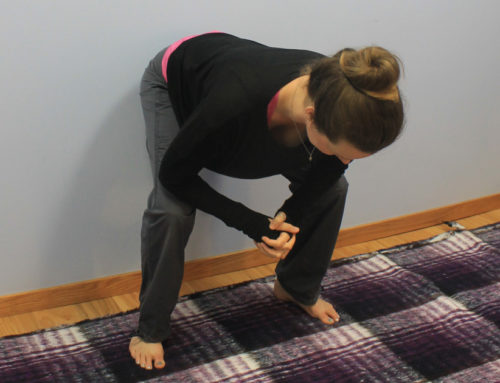
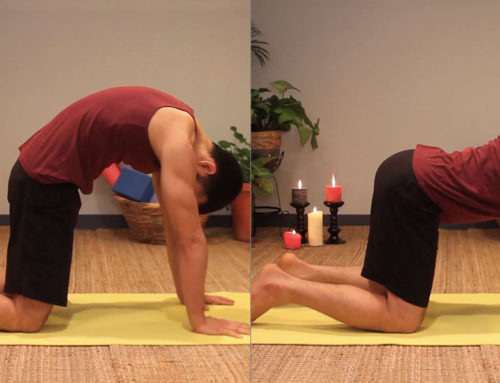
[…] your spine long and straight. To read more about Downward Facing Dog, check out these blogs on the benefits and […]